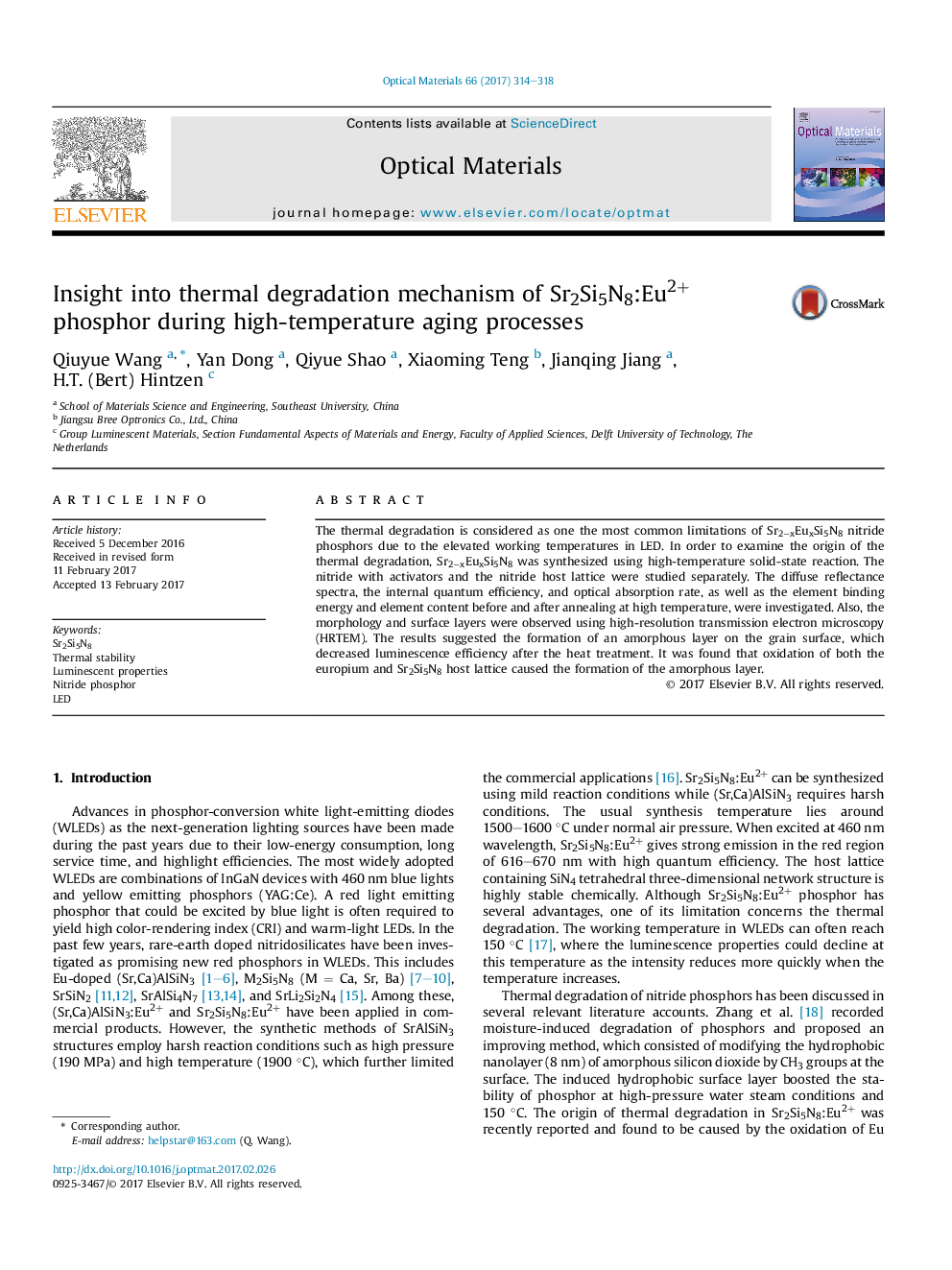| Article ID | Journal | Published Year | Pages | File Type |
|---|---|---|---|---|
| 5442823 | Optical Materials | 2017 | 5 Pages |
Abstract
The thermal degradation is considered as one the most common limitations of Sr2âxEuxSi5N8 nitride phosphors due to the elevated working temperatures in LED. In order to examine the origin of the thermal degradation, Sr2âxEuxSi5N8 was synthesized using high-temperature solid-state reaction. The nitride with activators and the nitride host lattice were studied separately. The diffuse reflectance spectra, the internal quantum efficiency, and optical absorption rate, as well as the element binding energy and element content before and after annealing at high temperature, were investigated. Also, the morphology and surface layers were observed using high-resolution transmission electron microscopy (HRTEM). The results suggested the formation of an amorphous layer on the grain surface, which decreased luminescence efficiency after the heat treatment. It was found that oxidation of both the europium and Sr2Si5N8 host lattice caused the formation of the amorphous layer.
Related Topics
Physical Sciences and Engineering
Materials Science
Ceramics and Composites
Authors
Qiuyue Wang, Yan Dong, Qiyue Shao, Xiaoming Teng, Jianqing Jiang, H.T. (Bert) Hintzen,
